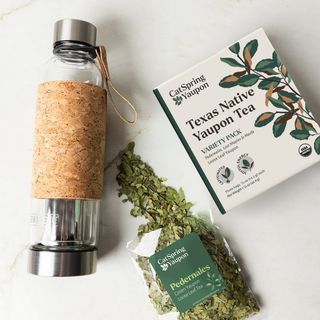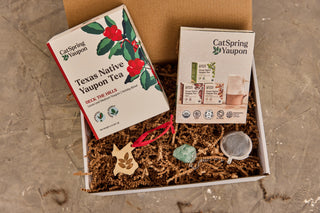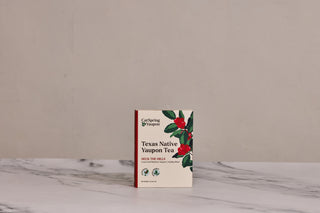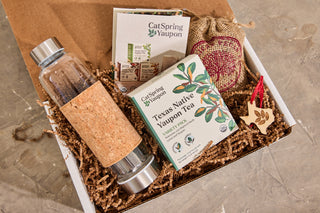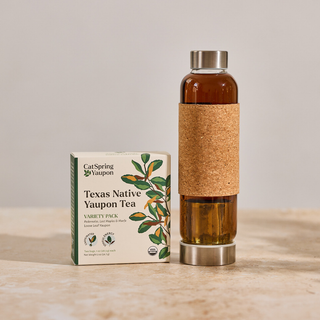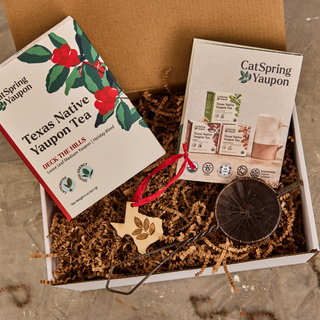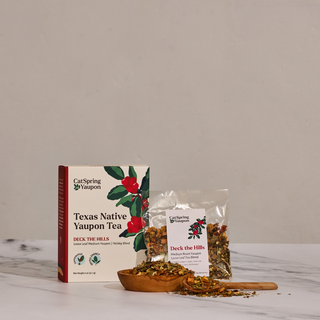Is yaupon tea really named after vomiting? Not exactly—and the truth is far more fascinating. The scientific name Ilex vomitoria has fueled centuries of misunderstanding about this native tea plant. In this post, we’ll uncover where that name came from, why it stuck, and why yaupon’s smooth caffeine and rich history have nothing to do with nausea.
Our First Encounter with the Name
When we first began harvesting yaupon on our family land in Cat Spring, Texas, someone asked if we were really selling “vomit tea.” It was half joke, half genuine confusion—and we quickly learned this misconception was common. That moment became part of our mission: to share yaupon’s real story and set the record straight.
How Ilex vomitoria Got Its Name
The plant’s scientific name was given in 1789 by William Aiton, a Scottish botanist at Kew Gardens in London. He based “vomitoria” on reports from early European colonists who witnessed Indigenous purification ceremonies.
In some of these rituals, participants would intentionally overconsume a strong brew of yaupon tea (sometimes mixed with other herbs) before important events, like council meetings or hunts. This wasn’t everyday drinking—it was part of a specific ceremonial context, where induced vomiting symbolized spiritual cleansing.
European observers misunderstood this as a property of the plant itself, rather than the result of drinking very large, concentrated quantities. The name stuck, even though moderate yaupon consumption has no such effect.
What Yaupon Tea Actually Does
Yaupon is naturally caffeinated, thanks to its unique combination of caffeine and theobromine. It’s the only native tea plant in North America and has been enjoyed for centuries for its smooth caffeine lift—providing energy without the crash or jitters of coffee.
Far from causing discomfort, yaupon is often easier on the stomach than coffee, making it a gentle alternative for daily sipping.
Why the Misconception Persists
Scientific names tend to carry authority, so Ilex vomitoria still makes people raise an eyebrow. Add in the fact that yaupon fell out of mainstream use for over a century, and the myth had time to take root.
But as yaupon enjoys a revival—thanks to sustainable harvesting, growing interest in native plants, and communities rediscovering its cultural history—more people are learning that “vomitoria” is just an outdated, misleading label.
Bringing the Truth to the Table
At CatSpring Yaupon, we take pride in sharing this tea’s real story—one of resilience, tradition, and care for the land. Our yaupon is wild-harvested in its native Texas habitat, using regenerative methods that echo the stewardship Indigenous communities have practiced for centuries.
By connecting people to yaupon’s authentic history, we hope to replace that old misconception with appreciation for what it truly is: a smooth, naturally energizing native tea.
A Cup Full of Truth
Every time you brew yaupon, you’re sipping something far older and richer than its scientific name suggests. It’s a taste of North American history, a gentle source of focus, and a plant worthy of its revival.
